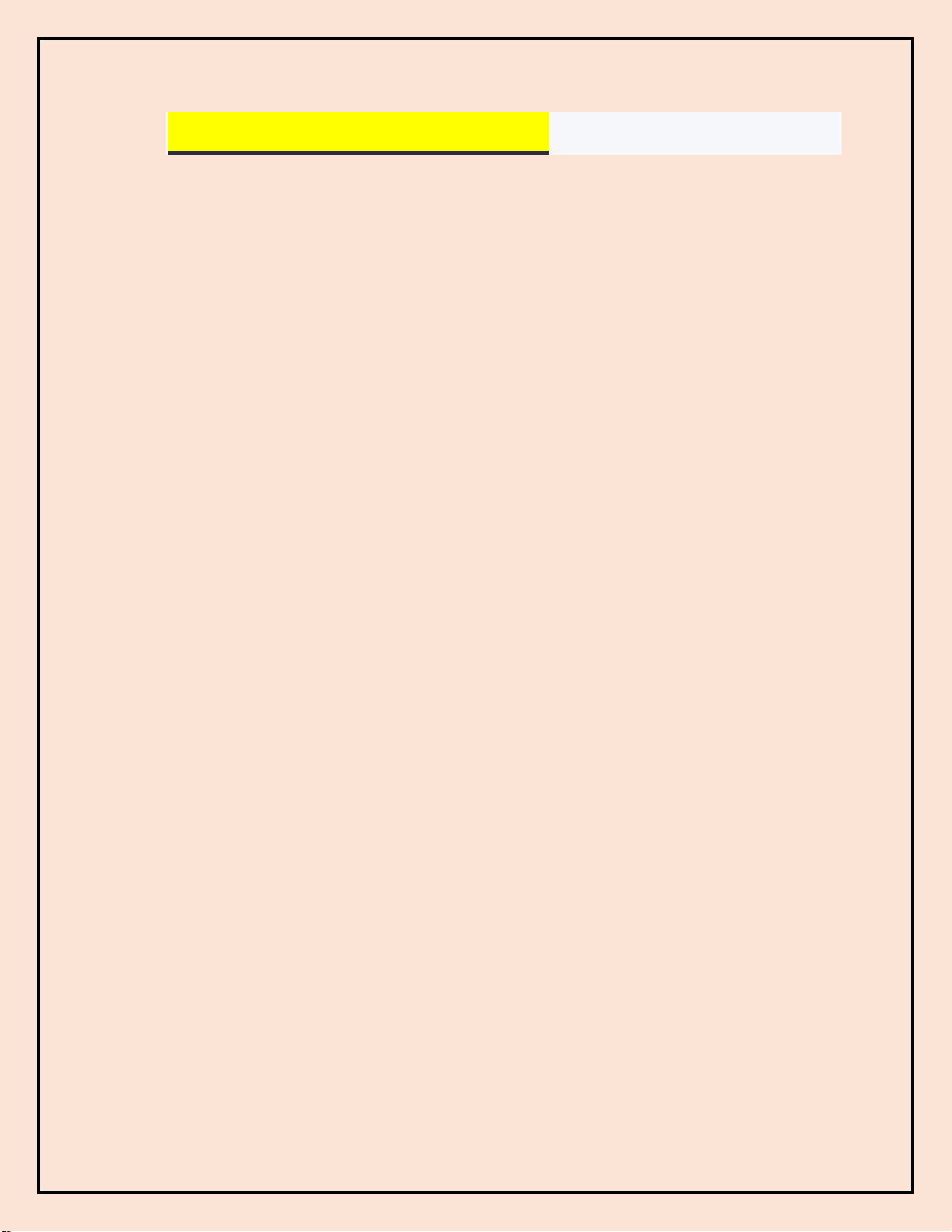
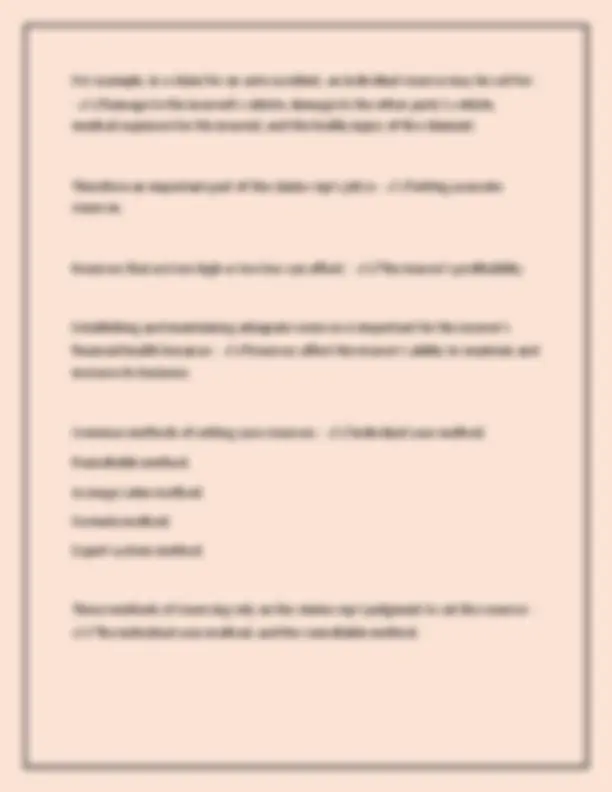
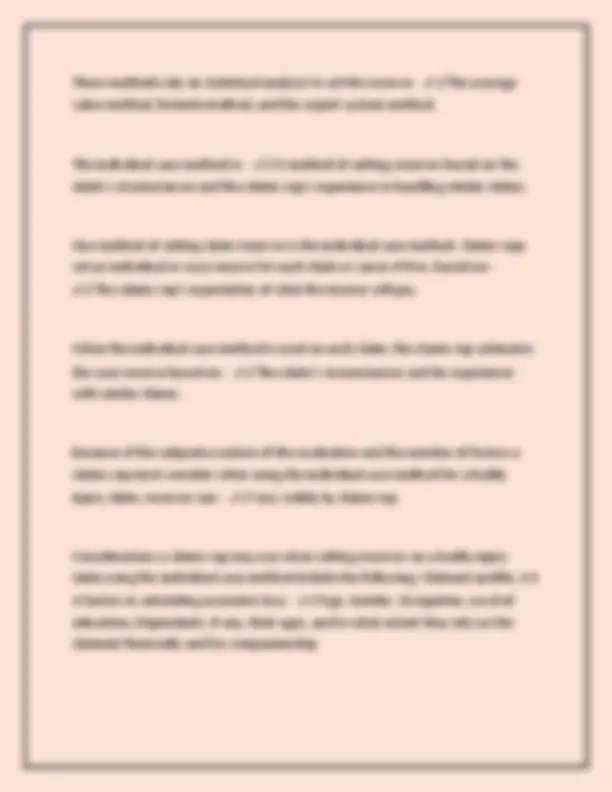
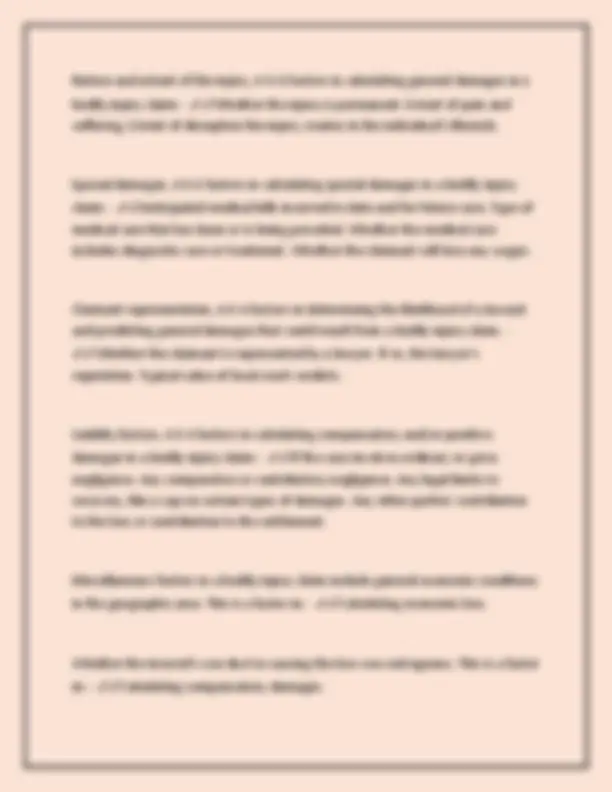
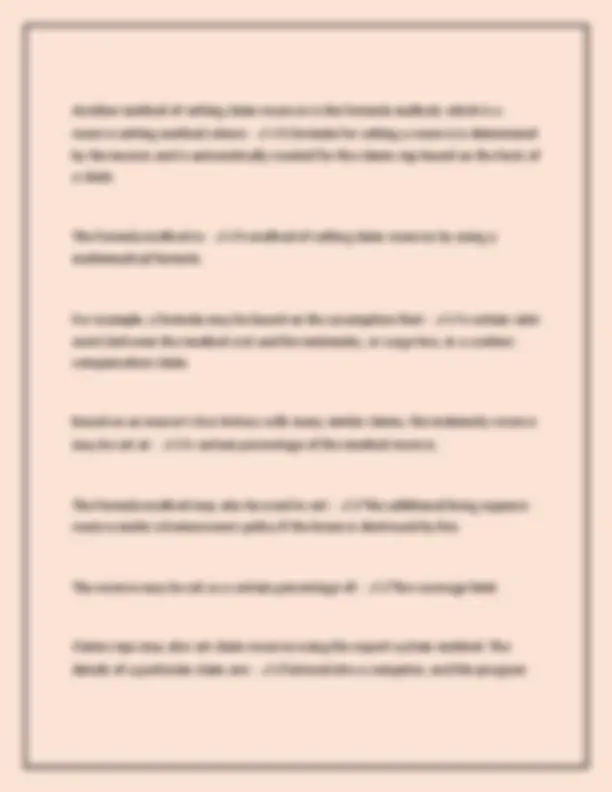
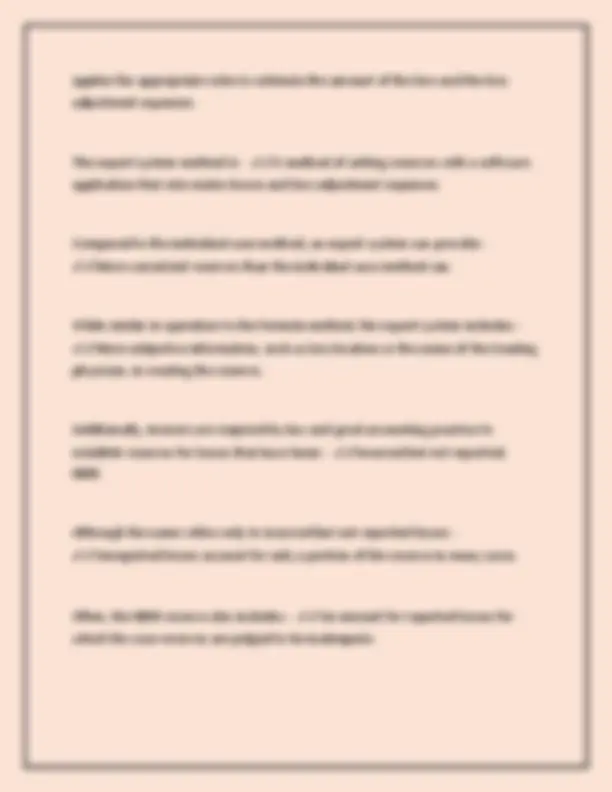
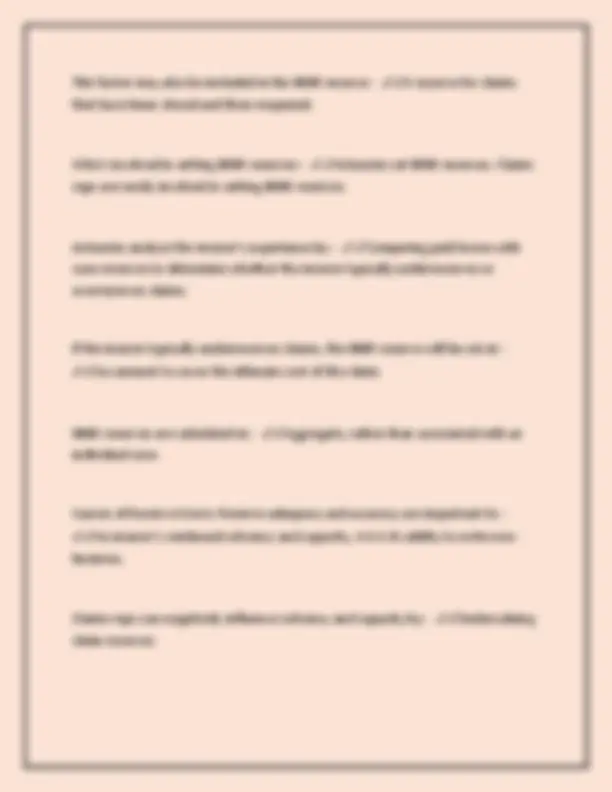
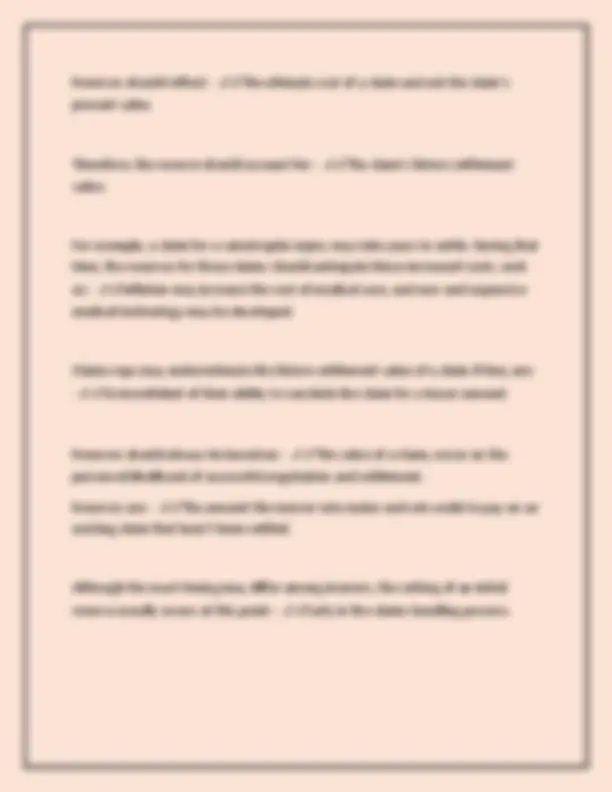
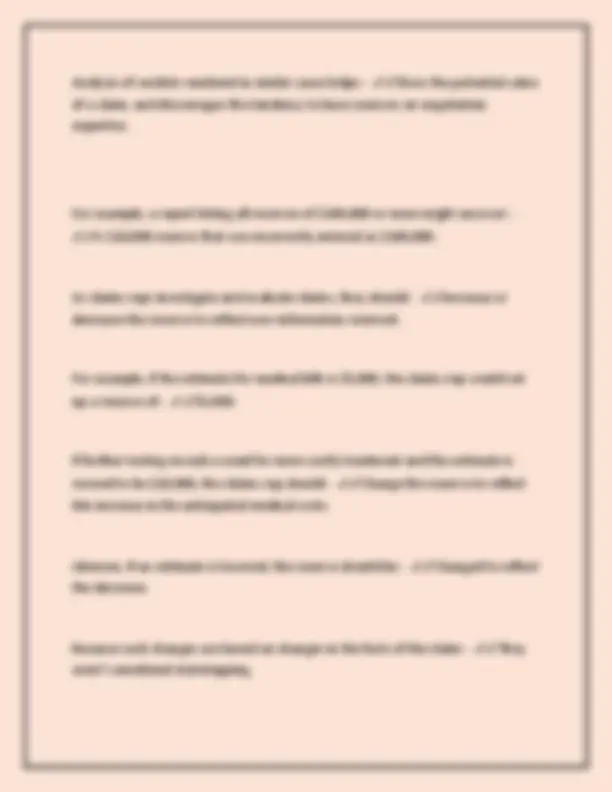
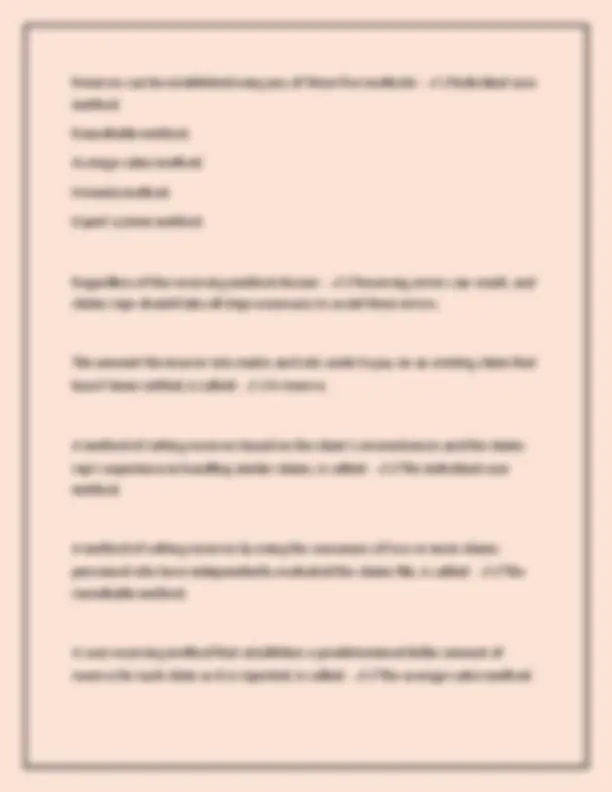


Study with the several resources on Docsity

Earn points by helping other students or get them with a premium plan


Prepare for your exams
Study with the several resources on Docsity

Earn points to download
Earn points by helping other students or get them with a premium plan
Community
Ask the community for help and clear up your study doubts
Discover the best universities in your country according to Docsity users
Free resources
Download our free guides on studying techniques, anxiety management strategies, and thesis advice from Docsity tutors
Some inadvertent errors in setting reserves can be detected using: - ✔✔Computer software that stores claims information. Some claims-information systems provide: - ✔✔A data-entry check. For example, the software might require that the reserve amount be entered: - ✔✔Twice to allow the user a chance to verify the amount. Additionally, claims managers can review reports of reserves from the preceding day for: - ✔✔Unusual entries or reserves that exceed authority. When any of these methods is used inappropriately: - ✔✔Reserving errors can occur. For example, reserving errors can occur when: - ✔✔Misusing the more subjective individual case method results in the need to repeatedly raise the reserve amount. Claims reps often establish claim reserves, A K A case reserves, A K A loss reserves, in conjunction with: - ✔✔Identifying the policy
Typology: Exams
1 / 16

This page cannot be seen from the preview
Don't miss anything!










Some inadvertent errors in setting reserves can be detected using: - ✔✔Computer software that stores claims information. Some claims-information systems provide: - ✔✔A data-entry check. For example, the software might require that the reserve amount be entered: - ✔✔Twice to allow the user a chance to verify the amount. Additionally, claims managers can review reports of reserves from the preceding day for: - ✔✔Unusual entries or reserves that exceed authority. When any of these methods is used inappropriately: - ✔✔Reserving errors can occur. For example, reserving errors can occur when: - ✔✔Misusing the more subjective individual case method results in the need to repeatedly raise the reserve amount. Claims reps often establish claim reserves, A K A case reserves, A K A loss reserves, in conjunction with: - ✔✔Identifying the policy.
The types of reserves that are established are often determined by: - ✔✔An insurer's claims information system. For example: - ✔✔Establishing one reserve for property damage and another for bodily injury. Some systems require separate reserves: - ✔✔For each claimant in a claim. A leading cause of insurer insolvency is: - ✔✔Inaccurate case reserving. Claims reps should be familiar with the advantages and dangers of the methods used to: - ✔✔Establish case loss reserves. Insurers can establish case reserves using any of several different methods. These are five common methods: - ✔✔Individual case method. Roundtable method. Average value method. Formula method. Expert system method. Some systems require seh per it expense reserves for: - ✔✔The costs of handling the claim.
These methods rely on statistical analysis to set the reserve: - ✔✔The average value method, formula method, and the expert system method. The individual case method is: - ✔✔A method of setting reserves based on the claim's circumstances and the claims rep's experience in handling similar claims. One method of setting claim reserves is the individual case method. Claims reps set an individual or case reserve for each claim or cause of loss, based on: - ✔✔The claims rep's expectation of what the insurer will pay. When the individual case method is used on each claim, the claims rep estimates the case reserve based on: - ✔✔The claim's circumstances and his experience with similar claims. Because of the subjective nature of the evaluation and the number of factors a claims rep must consider when using the individual case method for a bodily injury claim, reserves can: - ✔✔Vary widely by claims rep. Considerations a claims rep may use when setting reserves on a bodily injury claim using the individual case method include the following: Claimant profile, A K A factors in calculating economic loss: - ✔✔Age, Gender, Occupation, Level of education, Dependents, if any, their ages, and to what extent they rely on the claimant financially and for companionship
Nature and extent of the injury, A K A factors in calculating general damages in a bodily injury claim: - ✔✔Whether the injury is permanent. Extent of pain and suffering. Extent of disruption the injury creates in the individual's lifestyle. Special damages, A K A factors in calculating special damages in a bodily injury claim: - ✔✔Anticipated medical bills incurred to date and for future care. Type of medical care that has been or is being provided. Whether the medical care includes diagnostic care or treatment. Whether the claimant will lose any wages. Claimant representation, A K A factors in determining the likelihood of a lawsuit and predicting general damages that could result from a bodily injury claim. - ✔✔Whether the claimant is represented by a lawyer. If so, the lawyer's reputation. Typical value of local court verdicts. Liability factors, A K A factors in calculating compensatory and/or punitive damages in a bodily injury claim: - ✔✔If the case involves ordinary or gross negligence. Any comparative or contributory negligence. Any legal limits to recovery, like a cap on certain types of damages. Any other parties' contribution to the loss or contribution to the settlement. Miscellaneous factors in a bodily injury claim include general economic conditions in the geographic area. This is a factor in: - ✔✔Calculating economic loss. Whether the insured's con duct in causing the loss was outrageous. This is a factor in: - ✔✔Calculating compensatory damages.
However, it's a suitable method to review initial reserves for: - ✔✔Serious or prolonged claims. Claims reps, or claims-processing computer systems, may also set claim reserves using: - ✔✔The average value method. The average value method is: - ✔✔A case reserving method that establishes a predetermined dollar amount of reserve for each claim as it's reported. The average value method is useful when: - ✔✔There are small variations in loss size for a particular type of claim and when claims can be concluded quickly. The average values are usually based on: - ✔✔Data from past claims and adjusted to reflect current conditions. For example, auto windshield claims may be initially reserved at $650 based on: - ✔✔An insurer's previous loss experience with those claims. That figure may remain the same until: - ✔✔The claim has been concluded. For some claims, the initial reserve is based on the average value method, but claims reps are required to: - ✔✔Modify the initial reserve within a specified number of days to reflect each claim's circumstances.
Another method of setting claim reserves is the formula method, which is a reserve setting method where: - ✔✔A formula for setting a reserve is determined by the insurer and is automatically created for the claims rep based on the facts of a claim. The formula method is: - ✔✔A method of setting claim reserves by using a mathematical formula. For example, a formula may be based on the assumption that: - ✔✔A certain ratio exists between the medical cost and the indemnity, or wage loss, in a workers compensation claim. Based on an insurer's loss history with many similar claims, the indemnity reserve may be set at: - ✔✔A certain percentage of the medical reserve. The formula method may also be used to set: - ✔✔The additional living expense reserve under a homeowners policy if the home is destroyed by fire. The reserve may be set as a certain percentage of: - ✔✔The coverage limit. Claims reps may also set claim reserves using the expert system method. The details of a particular claim are: - ✔✔Entered into a computer, and the program
This factor may also be included in the IBNR reserve: - ✔✔A reserve for claims that have been closed and then reopened. Who's involved in setting IBNR reserves: - ✔✔Actuaries set IBNR reserves. Claims reps are rarely involved in setting IBNR reserves. Actuaries analyze the insurer's experience by: - ✔✔Comparing paid losses with case reserves to determine whether the insurer typically underreserves or overreserves claims. If the insurer typically underreserves claims, the IBNR reserve will be set at: - ✔✔An amount to cover the ultimate cost of the claim. IBNR reserves are calculated in: - ✔✔Aggregate, rather than associated with an individual case. Causes of Reserve Errors: Reserve adequacy and accuracy are important to: - ✔✔An insurer's continued solvency and capacity, A K A its ability to write new business. Claims reps can negatively influence solvency and capacity by: - ✔✔Undervaluing claim reserves.
Although an occasional inadequate or inaccurate reserve may have little or no effect on an insurer: - ✔✔Consistently inaccurate or inadequate reserves on thousands of claims can distort the ratemaking process, eventually affecting an insurer's ability to write business competitively and, ultimately, its solvency. Reserving errors can be caused in several ways. Initial reserves may be inaccurate because of: - ✔✔Limited information. Thus, many insurers require that initial reserves be reviewed and adjusted for accuracy: - ✔✔Within a short time frame. In addition, most insurers require reserves to be evaluated whenever: - ✔✔A claim file is reviewed. That evaluation ensures that reserves reflect: - ✔✔The most current information contained in the claim file. Reserve inaccuracy can also be the result of: - ✔✔The claims rep's poor planning, lack of expertise in estimating claim severity, or unwillingness to reevaluate facts. In these cases, the claims rep may: - ✔✔Set a modest initial reserve but then raise the reserve by a few thousand dollars to issue payments. Later, the reserve will be increased again when: - ✔✔More bills arrive.
Reserves should reflect: - ✔✔The ultimate cost of a claim and not the claim's present value. Therefore, the reserve should account for: - ✔✔The claim's future settlement value. For example, a claim for a catastrophic injury may take years to settle. During that time, the reserves for these claims should anticipate these increased costs, such as: - ✔✔Inflation may increase the cost of medical care, and new and expensive medical technology may be developed. Claims reps may underestimate the future settlement value of a claim if they are:
Analysis of verdicts rendered in similar cases helps: - ✔✔Show the potential value of a claim, and discourages the tendency to base reserves on negotiation expertise. For example, a report listing all reserves of $100,000 or more might uncover: - ✔✔A $10,000 reserve that was incorrectly entered as $100,000. As claims reps investigate and evaluate claims, they should: - ✔✔Increase or decrease the reserve to reflect new information received. For example, if the estimate for medical bills is $5,000, the claims rep would set up a reserve of: - ✔✔$5,000. If further testing reveals a need for more costly treatment and the estimate is revised to be $10,000, the claims rep should: - ✔✔Change the reserve to reflect this increase in the anticipated medical costs. Likewise, if an estimate is lowered, the reserve should be: - ✔✔Changed to reflect the decrease. Because such changes are based on changes in the facts of the claim: - ✔✔They aren't considered stairstepping.
A method of setting claim reserves by using a mathematical formula, is called: - ✔✔The formula method. A method of setting reserves with a software application that esta mates losses and loss adjustment expenses, is called: - ✔✔The expert system method.